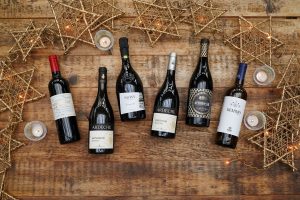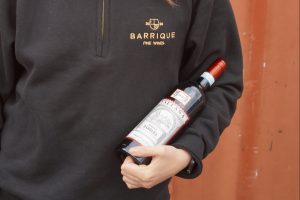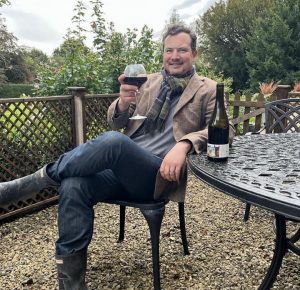A guide to tasting wine
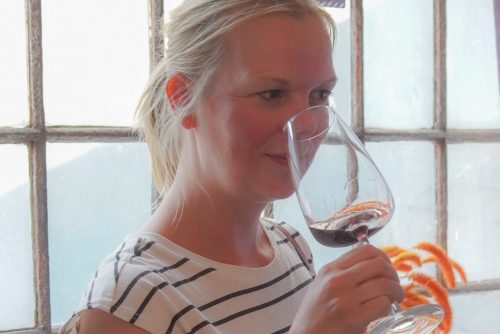
If you have been to one of our recent wine club events, you will have heard us talk about our firm belief that wine is better experienced when it’s understood.
 But learning how to taste wine, doesn’t have to be daunting. We want to help break it down and make it simple, so you can experience more delicious wine.
But learning how to taste wine, doesn’t have to be daunting. We want to help break it down and make it simple, so you can experience more delicious wine.
There are three key elements to tasting: eyes, nose and palate.
To start, you want your glass filled a third full and have a white background to look at your wine against, a plain piece of paper will work.
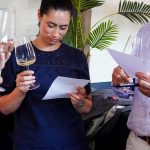 Eyes
Eyes
Taking it a step beyond simply red or white, the appearance of a wine in the glass can start to give us some clues about the age and winemaking involved.
When looking at the appearance, you’re primarily looking at depth and shade of colour. Tilt your glass to a 45-degree angle. Firstly, examine how deep the colour in your glass is. With white wines, a wine will get deeper and more golden in colour for two main reasons, time spent in an oak barrel and age. As a white wine gets older it gets deeper in colour as it’s exposed to more oxygen over time.
Whereas red wines get lighter with age. You’re not going to get any detail on whether a wine has been in oak on the appearance of a red wine. But look for any change in colour between the core of the wine and the rim. If the rim is turning a more bricky colour, then that may give you an indication that the wine is a bit older.
The depth of colour in your red wine can also give you clues about the grapes that might have been used for the wine. If the wine is deep in colour, it’s likely to be made from a thick-skinned grape, for example Shiraz or Cabernet Sauvignon. If it’s a lighter wine, then from a thin-skinned grape like Pinot Noir.

Nose
Just like with food, the aromas, and understanding those aromas can add to the taste and enjoyment of a wine.
Give your wine a swirl in the glass, this isn’t to look like a wine snob, but rather to give oxygen and life to the aromas in your glass, so they’re easier to detect! When you smell a wine, start with the fruit. Ask yourself what kind of fruit you’re getting. In a white wine for example, you might ask, is it citrus fruit? Green fruit? Stone fruit? Or tropical fruit?
It may well be more than one category. Once you’ve detected the dominant categories, try and narrow it further. If it’s citrus fruit, which citrus fruit is it more like, lemon or lime, grapefruit or orange? On a red wine, is it red or black fruit?
Once you’ve considered the fruit, ask yourself is there anything else that you can smell? Anything floral, spicy, herbal or savoury, can you narrow it down to a specific aroma. The more well-defined aromas that you can clearly detect in your glass, the more complex and interesting the wine is.
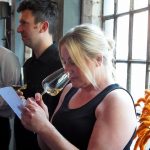
Palate
Finally, the moment we have all been waiting for, the palate. When you taste the wine, you want to consider two factors, the mouthfeel of the wine and the flavours.
When you first taste the wine, ask yourself the following: do you notice the acidity in the wine? Does your mouth begin to water? This is the acidity, it gives wine its freshness and structure. Think about how rich the wine tastes in your mouth – does it feel like water or cream? – this will help you decide how light or full bodied it is.
With a red wine, you can also consider the tannins. Move the red wine towards the gums at the front of your mouth, you may notice a drying sensation, those are tannins, adding structure and body of the wine.
Then think about the flavours. How similar are they to the aromas you detected on the nose? Is there anything surprising about how the wine tastes as opposed to how it smells?
Finally, think about the finish on the wine. Once you’ve swallowed the wine, how long can you taste it for, the longer and more interesting the finish, the better the wine in your glass.
Like anything, the more you practice tasting, the better you’ll get at it. Great wine can offer the taster so much, so keep tasting and your wine experiences will only get better.
If you’d like to explore more about wine and don’t know where to start, have a look at our Voyage subscription which guides you through the different grape varieties and the key regions with expert tasting notes and videos.
Visit Barrique Fine Wines and get 15% off wines as a TheBusinessDesk.com reader:



